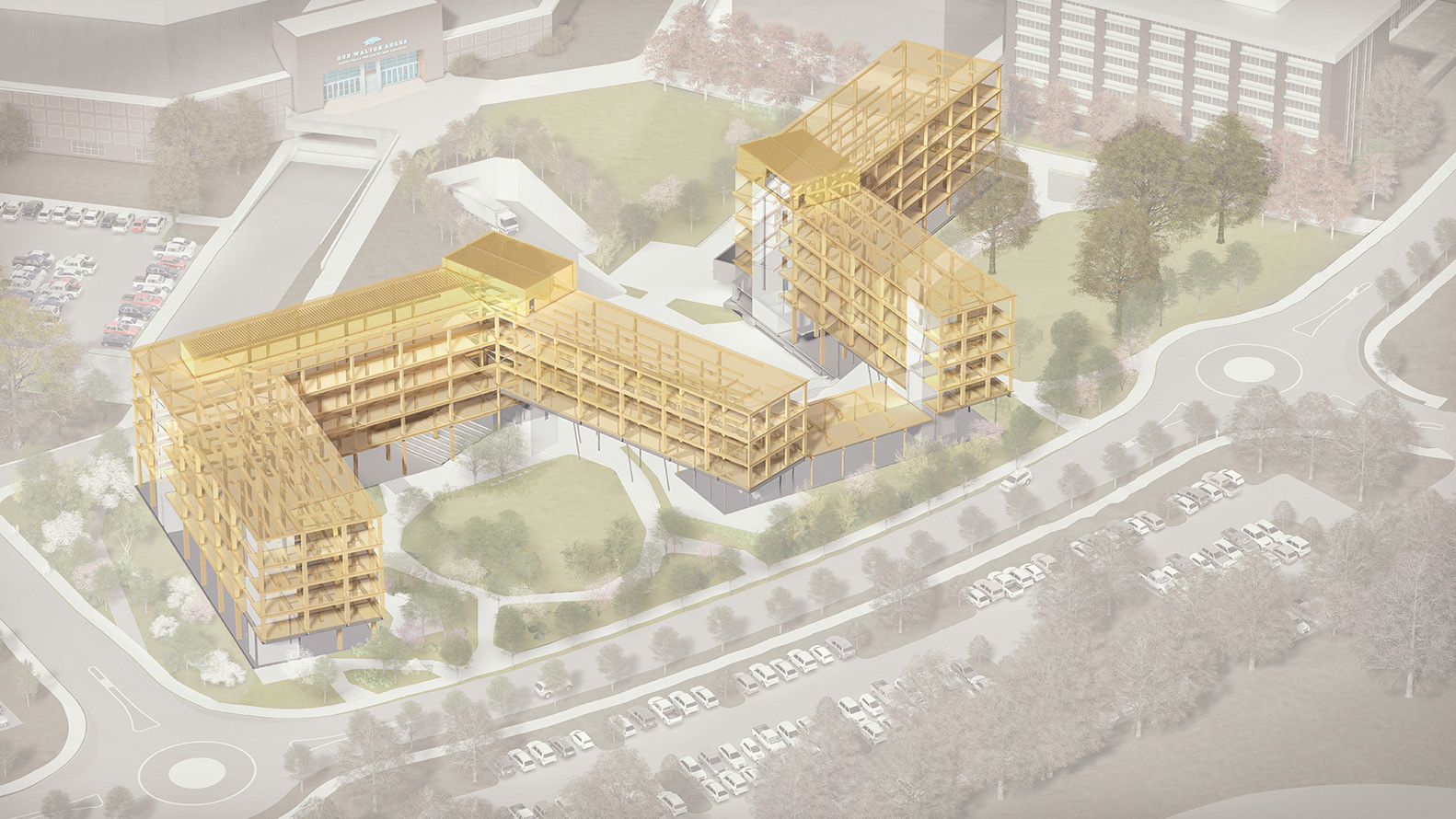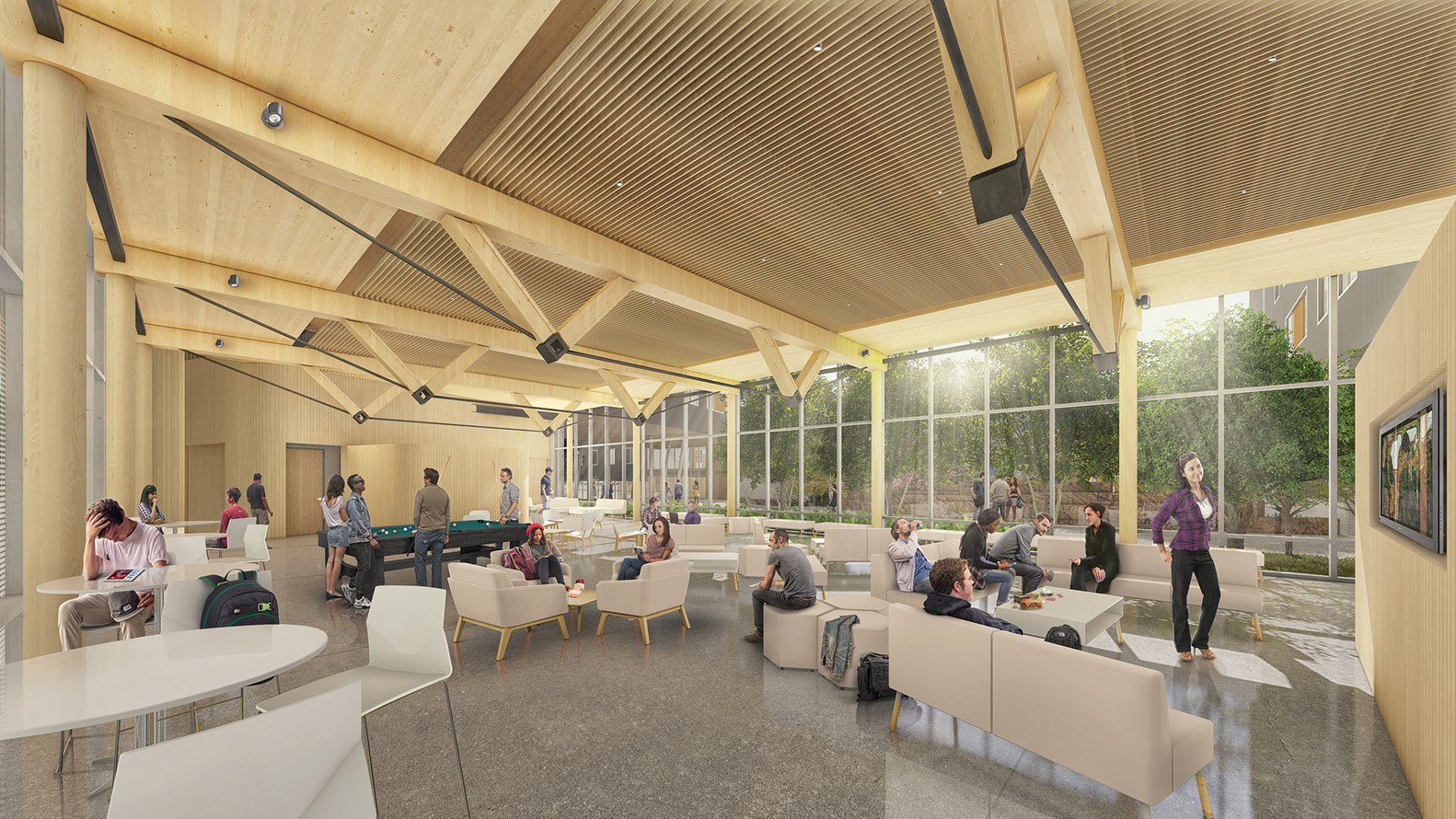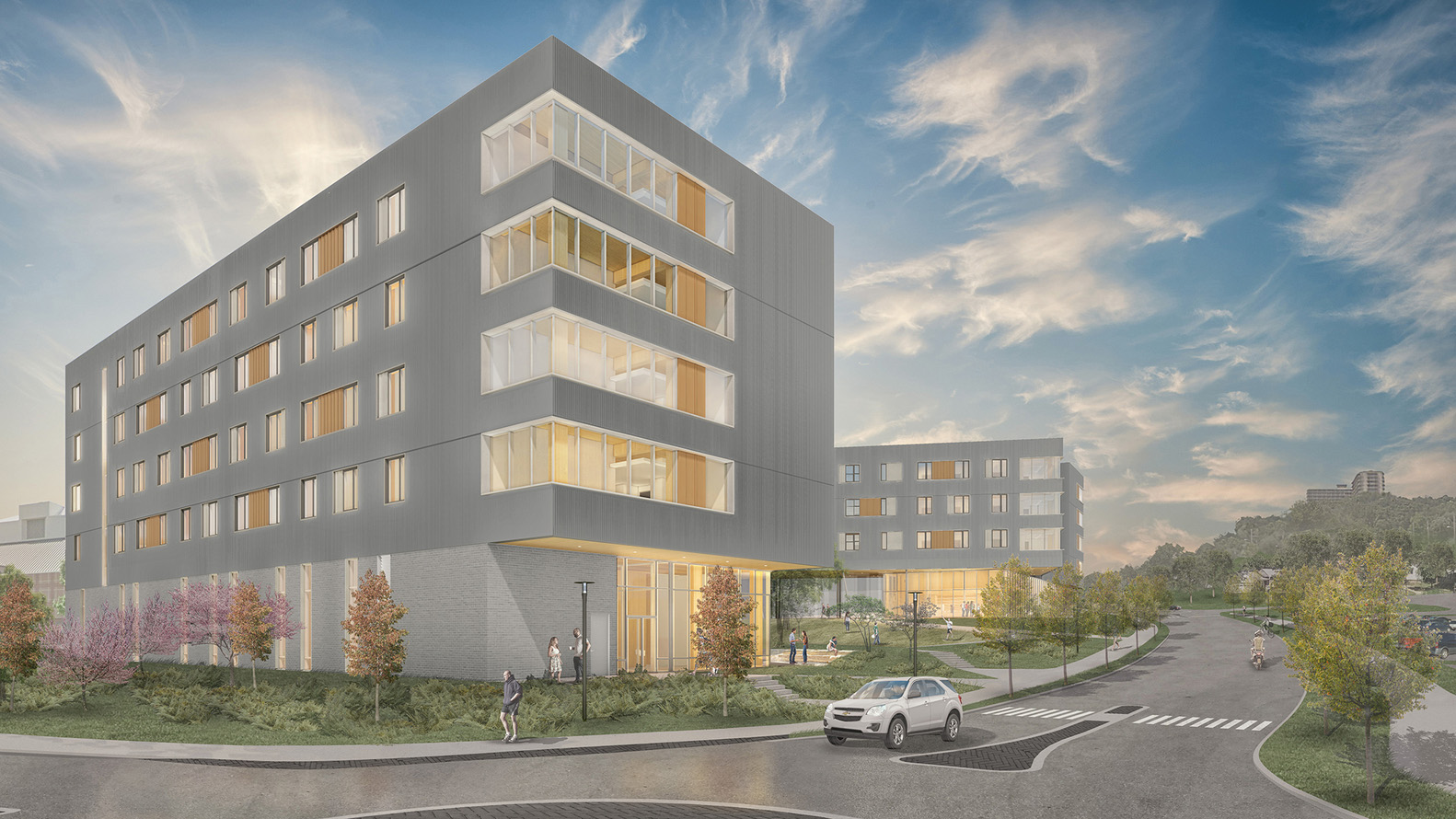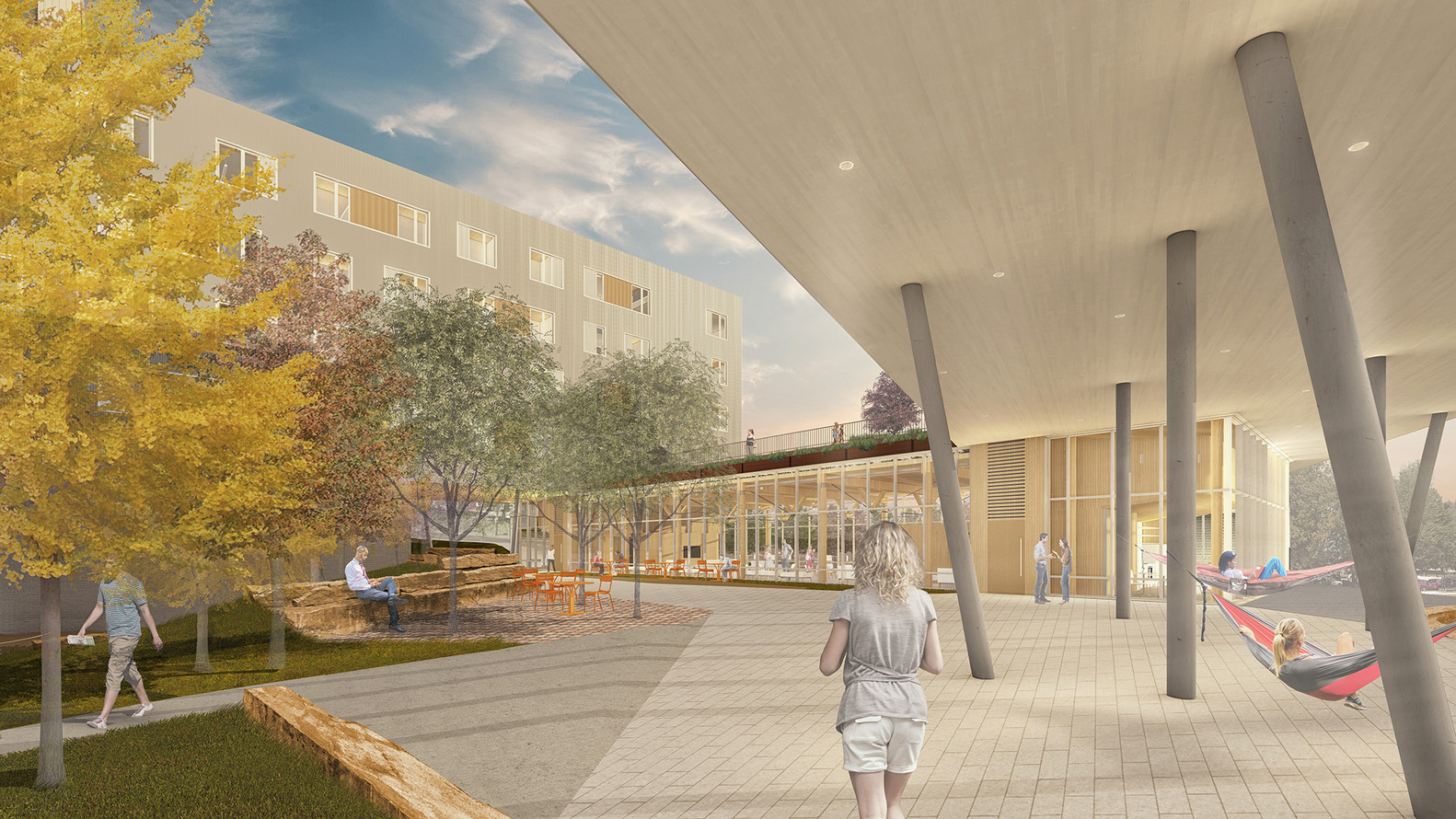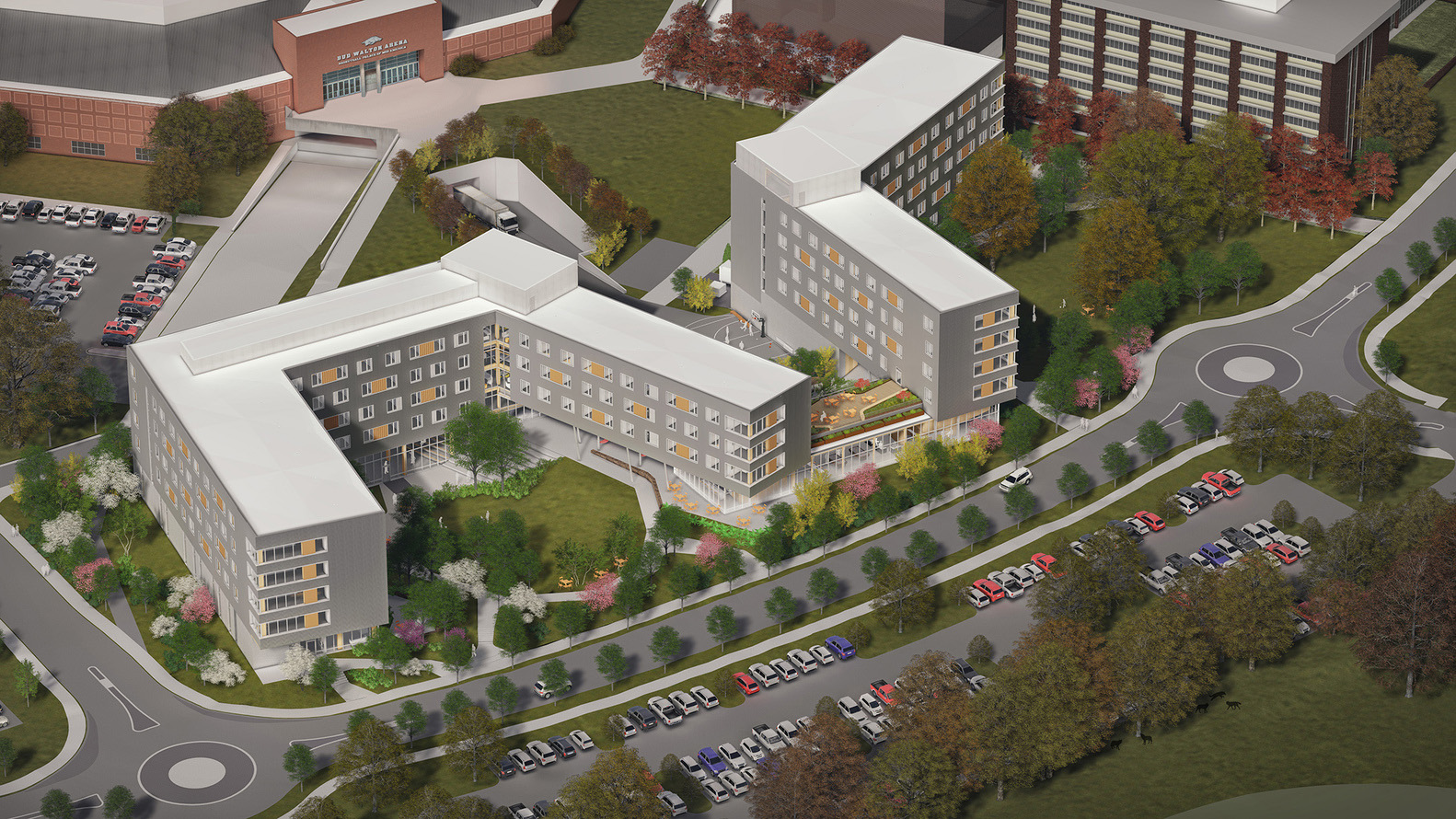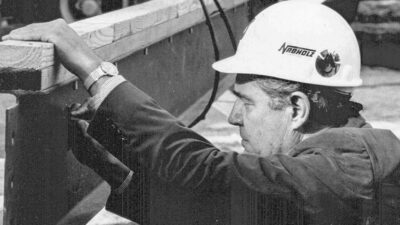Nabholz, along with client University of Arkansas and architects Modus Studio, Mackey Mitchell Architects, and Leers Weinzapfel Associates, are about to embark on the nation’s first large-scale mass timber residence hall project. The five-story Stadium Residence Halls will comprise of more than 200,000 square feet and 368 rooms and are expected to be completed before the start of the fall 2019 semester.
Nabholz’ research into this new-to-the-scene building material began long before construction started. The project team visited jobsites in North Carolina on the Duke Campus, as well as the First Tech Corporate Headquarters in Portland, Oregon which is the largest CLT project in the United States. Once complete, the Stadium Drive Residence Halls will pass this project to become the largest CLT project in the United States.
Cross-Laminated Timber – The Facts
So what exactly is cross-laminated timber? CLT panels consist of several layers of kiln-dried lumber boards stacked in alternating directions, bonded with structural adhesives, and pressed to form a solid, straight, rectangular panel. Think plywood on steroids.
CLT also offers several safety advantages. While at the mill, CLT panels are cut to size, including openings for doors, windows openings, utility piping, and ductwork, with state-of-the art CNC (Computer Numerical Controlled). Because this is done offsite, this reduces the chance of accidents on site and speeds up the installation of systems. CLT panels are also exceptionally stiff, strong, and stable, handling load transfer on all sides.
It’s easy to see why any form of timber construction can pick-up a reputation for fire risk, but for solid wood and cross-laminated Timber, performance in a fire is a long way from their stick frame cousins. According to Greenspec®, to understand how efficient CLT is in a fire, we should start with the understanding that fire resistance is the ability of a material to confine a fire or to continue to provide a structural function or both. The measure of fire resistance is the time elapsed from the start of the fire up until the point where the material fails to function. Typically resistance is expressed in minutes (e.g. FR 30, 45, 60 or 120). CLT’s fire resistance is provided through charring. As the face of the timber panel is exposed to a fire that ramps up to a temperature in excess of 752° Fahrenheit, the surface of the timber ignites and burns at a steady rate. As the timber burns, it loses its strength and becomes a black layer of char. The char becomes an insulating layer preventing an excessive rise in temperature within the unburnt core of the panel. It is this unaffected core that continues to function for the period of the fire resistance. To achieve the designed fire resistance period there must be sufficient virgin solid timber remaining behind the char layer to sustain the loads applied. Therefore each CLT panel within the building must be designed for the fire resistance period and the specific loadings applied to that panel.
Advantages of Cross-laminated Timber
Though relatively new to the United States, this building material is frequently used in Europe and Canada. Builders and designers cite several advantages to using cross-laminated timber. First and foremost, the environmental impact of CLT is far less than traditional building materials such as concrete and steel. With responsible forestry management, timber is a sustainable and renewable resource. Cross-laminated timber’s carbon footprint pales in comparison to that of concrete and steel. Also, it is made to order from computer generated models, eliminating waste.
If CLT continues to grow in popularity, it could translate to big economic gains for our region. In Arkansas, timber is a large industry, meaning more CLT buildings could profit Arkansans. The University of Arkansas is laying the path for this building material to become more mainstream in the U.S. at potential gain for Arkansans. Just think of this—the 142,000 cubic feet of timber that will be utilized on a massive project like the UA Stadium Drive Residence Hall is grown in Arkansas forests in a matter of hours.
This product offers other benefits specifically to builders. First, it is a familiar material for many craftsmen. It is a “friendly” material, requiring less specialized tools. Second, it makes for a cleaner job. Less concreate means less overages, drips, and over pours. It also requires no welding and there is none of the rusting associated with steel. Third, it makes building faster. Nabholz recently constructed a similarly sized project and it took 18 to 20 weeks to erect the structure. With CLT, we will erect this structure in 12 to 15 weeks. Cross-laminated timber can offer some relief for noise pollution. It is quieter to install, and eliminates a lot of the clanging that comes with working with steel.
How Nabholz is Becoming a Cross-laminated Timber Expert
With obvious benefits to workers, the environment, project owners, and some of the larger industries in our home state, Nabholz has made several investments to ready our team to handle the material. First, Rob Dodd, Nabholz Project Executive traveled to Vancouver, BC with the members of design team, UA housing, and UA School of Architecture to visit a CLT manufacturing facility to better understand how this product is made. This group also visited several projects constructed of CLT. The Nabholz project team traveled to Oregon to observe the largest CLT project in the U.S. during the installation phase (the Stadium Drive Residence Hall project will surpass this as the largest in the U.S.).
Nabholz brought a mass timber consultant on board, Kris Spickler. Kris has been a Professional Engineer since 1981 and worked in the Engineered Wood Products industry for 30 years. During the last 15 years, he has focused on Engineered Wood Lumber used in mass timber system design and now CrossLam, or cross-laminated timber.
Nabholz will self-perform the installation of the timber package on the UA Stadium Drive Residence Hall project, and with the experience gained on this project, will look to install timber packages on other projects in the future. With our carpentry and equipment resources and growing knowledge of mass timber construction, we are well positioned to be leaders in this market in our region. Already, we are constructing another CLT project in Northwest Arkansas along with the Stadium Drive Residence Hall project, the 5th Street Office Renovation in Bentonville.
